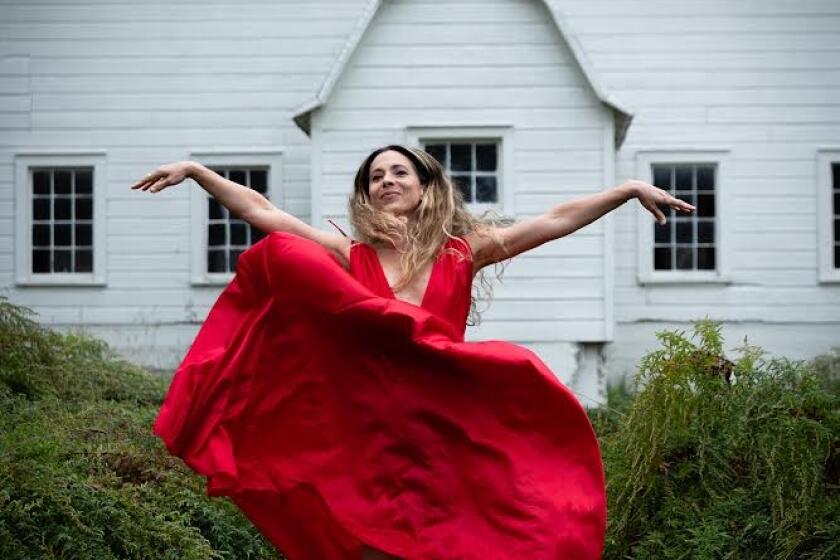
On the Shelf
'Lost + Found' and 'Good News'
By David LaChapelle
Taschen: 286 pages and 284 pages, $50
If you buy books linked on our site, The Times may earn a commission from Bookshop.org, whose fees support independent bookstores.
Celebrity photographer David LaChapelle is in his backyard — “a forest oasis in the middle of Hollywood,” as he calls it — on a warm midafternoon.
“It was built in 1927. That’s old for L.A.!” he says of the house.
It’s a short trip from his studio, a 12,000-square-foot wonderland also built in 1927, which boasts multiple stages and a massive prop warehouse. In the last year, LaChapelle has shot portraits there of Megan Thee Stallion, Charli XCX, Ice Spice and Elton John with Brandi Carlile.
Fall’s most anticipated books include novels from Rachel Kushner, Sally Rooney, Danzy Senna, Michael Connelly and Richard Price.
In reflecting on his prolific 40-year career, he begins and ends many of his stories with “it was wild!” — including Lady Gaga writing her 2009 song “Speechless” in his Maui home.
LaChapelle, 61, is one of the most published photographers in the world, with an anthology of books that includes “LaChapelle Land” (1996), “Hotel LaChapelle” (1999), “Heaven to Hell” (2006) and 2017’s “Lost & Found” and “Good News.” His work has expanded into music videos and film — his 2005 documentary, “Rize,” was released theatrically in 17 countries.
“Lost & Found” and “Good News” are now getting a fresh release through publisher Taschen on Sept. 24. The originals sold out, “which is kind of unusual for a photo book,” LaChapelle says.
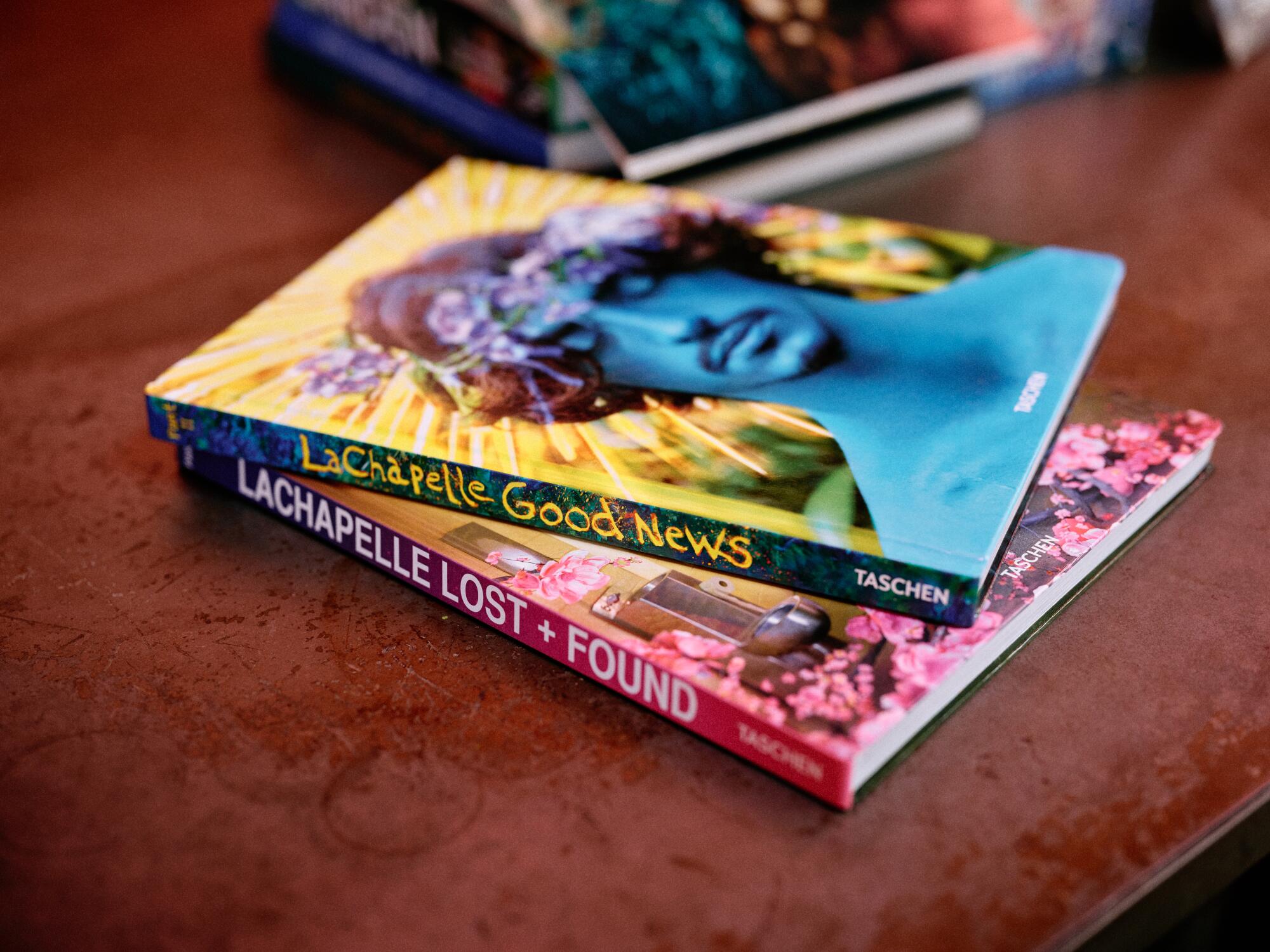
“Taschen wanted to rerelease them, and I was kind of against it for a while, but there’s been a lot of people going into the stores looking for them. There’s no box, so it’s a different price point. Even though they were very affordable to begin with, it’ll be even more affordable because we’ve used slightly thinner paper, although the quality is really good,” he explains.
LaChapelle is already working on the next book that will showcase the last few years of original work — including submerging Charli XCX in a fish tank.
“My favorite work is what I’ve done in the last 10 years and the film ‘Rize.’ That’s what I’m most in love with,” he says. “Something clicked with me years ago. And when I stopped the workaholism, I learned that the shoot experience has to be enjoyable, fun and exciting, and that is just as important as the photos being good, because this is my life.”
The finished photos have led a generation raised on social media to believe that LaChapelle’s work is computer-generated.
He says, “People thought that the Megan Thee Stallion and Ice Spice were AI because they’d never seen something so detailed. Younger viewers just aren’t accustomed to that. It’s theatrical, it isn’t an AI button-pressing thing. I leave room for the unexpected and the unplanned. I change ideas as we’re shooting; it’s always evolving.”
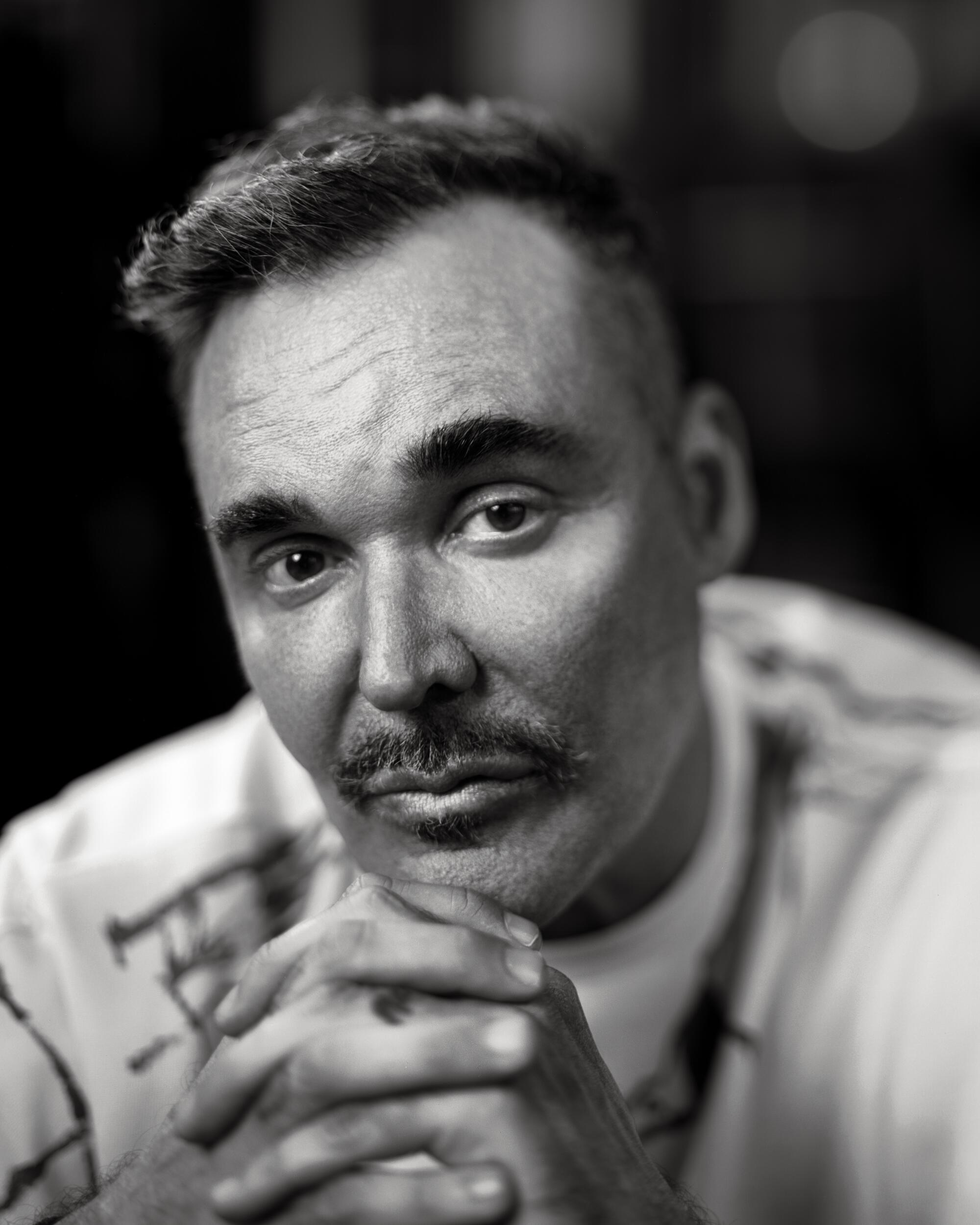
Always evolving is a theme for the photographer, who moved from North Carolina to New York as a teenager.
“It was 10 years of not being able to pay the bills,” he recalls. “That never leaves you. I still get excited when I’m invited to a party and they say there will be free food. The world was so different. Everyone was broke in New York. When I was waking up on my futon at age 18 in this rat-infested squat, I knew I didn’t want to be anywhere else in the world. There was an art explosion in 1980s New York that was so special. It was an artistic utopia.”
The 1980s and ’90s were blighted by the AIDS epidemic, though, and LaChapelle lost many of his loved ones, including his “first serious boyfriend,” who was 21.
“In the early ’80s, I took photos of all my friends in the East Village dressed in angel wings. I was hand-painting the negatives in the dark room, then I printed them myself. They were shown in museum exhibitions and they really stood up. The people in those photos are no longer with us, and those images really bring me back to the East Village.”
When he finally decided to get tested around 1994, “it was like a boulder rolled off my back,” he remembers. “I just wanted to have fun, and escapism was a big part of what I was doing, and everything was just pushing the envelope of being outrageous. I was photographing Amanda Lepore, Leonardo DiCaprio, Angelina Jolie and Mark Wahlberg. Those photos were in ‘Hotel LaChapelle.’ That was really new for photography: Building sets was really new, the conceptual work in fashion and portraiture was new. People hadn’t seen it, and it turned things upside down.”
He adds, “There were people that really resisted it and didn’t like it or people that really loved it. ‘Hotel LaChapelle’ was the most shoplifted book in Barnes & Noble history. I thought that was kind of funny, you know? It was kind of a phenomenon.”
Moon Unit Zappa on the ‘emotional trauma’ of her childhood: ‘Is genius worth the collateral damage?’
Moon Unit Zappa’s memoir is a self-portrait of an insecure and often confused child, worshipful of her absent father, Frank Zappa, and thirsty for maternal affection.
Still, the photographic escapism into glitz, excess and glamour took a toll.
“I dropped out of high school at 15 because of bullying, so I had nothing to fall back on. I didn’t want to be the hot thing that comes and goes, like so many photographers. I wanted ... the most exciting and wildest editorial and covers in whatever magazine we were in. I wanted videos in the top 10 on VH1. I was always on a plane, and it was like being a drug addict when you’re a workaholic. There’s a price to pay. So something has to give, and what gave was my personal relationships. It was emotionally stunting in certain ways. I was excelling in my career, but my personal life was struggling.”
By 2006, the period depicted in “Lost & Found,” LaChapelle had moved to Hawaii. His images reveal his disdain for materialism, and the cost of greed. Blooms are wilting, trash litters the landscape, colors are explosive but toxic.
“I took a year off and I thought I was quitting,” he says. “I bought a nudist colony in Maui — in the jungle on the east coast — and began to renovate this property of 19 acres that I turned into a farm, off the grid. After I’d done ‘Rize,’ I didn’t know if I had anything more to say. I thought I was a farmer, not a photographer. Then, six months in, a prestigious gallery called and asked me to do anything I wanted as long as it was new and original, so I did.”
He created the “After the Deluge” and “Awaken” series.
The reformatted releases of “Lost & Found” and “Good News” document LaChapelle’s work pre- and post-Maui.
“That year I took off in 2006 and 2007, the internet took off and magazines were not keeping up. That changed everything,” he recalls. “The budgets dropped, and Details closed. My era is Helmut Newton, Richard Avedon. … They started with Condé Nast and Hearst when they were very young, and they died still working in that system. My career has gone completely upside down with influencers, the internet, images online, and now everyone is a photographer.”
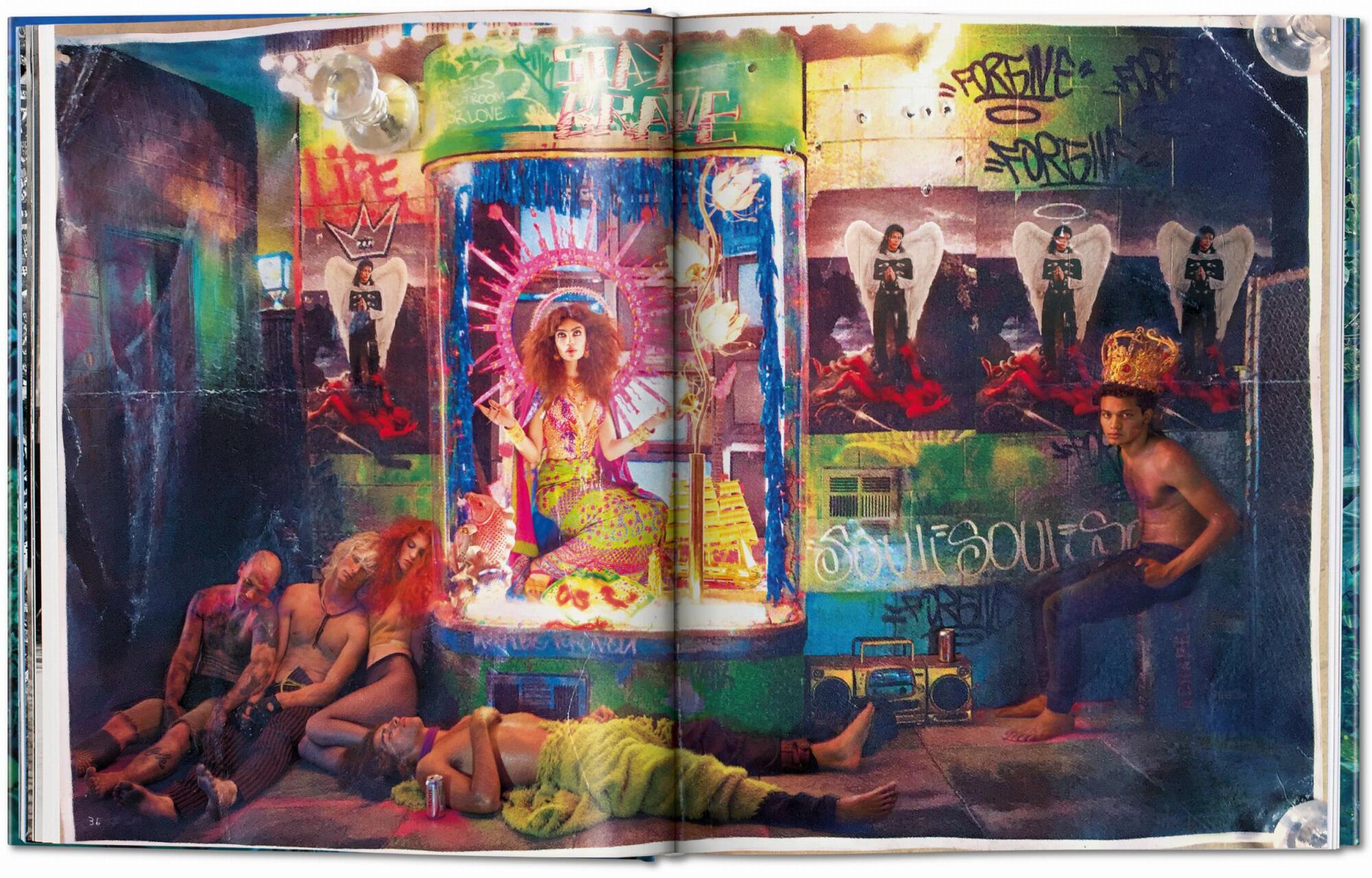
“Good News” is full of gorgeous young bodies, but it is also a treasure trove of portraits of powerful women, including Elizabeth Taylor, Helen Suzman and Miriam Makeba. He has also photographed his friend of 30-plus years, model, singer and performance artist Lepore. “I didn’t realize working with Amanda was going to create such a strong impact,” he says. “Just this weekend, someone made a speech at this dinner. I didn’t know her, but this trans girl said, ‘Your picture [of Lepore] was the reason I had the confidence to get my sex change.’ I mean, wow, that’s a lot of responsibility. Like, what did I do?”
LaChapelle delivers ludicrously sexy, alluring images that celebrate celebrities and their muscular, sleek limbs and poreless, naked flesh. Take a young, shirtless Kanye West depicted with thick gold chains and an ornate crucifix casually slung over his shoulder; a naked Doja Cat balancing on a rock, aiming her Cupid’s bow and arrow at the clouds; Miley Cyrus floating in the night sky in a glittering, barely-there pink G-string; and Pamela Anderson, with a braces-adorned smile, baring her breasts in a kitsch bedroom scene.
Danzy Senna’s ‘Colored Television’ is a funny Hollywood takedown that offers a window into the lives of ‘racial nomads’ who must negotiate a world that is hostile to them.
He says, “I had to fight a lot in the beginning. Not so much with editors but with publicists. I got blacklisted from a lot of Hollywood agencies representing actors and actresses. Their job is to protect their client, but I always make people look good, and my work is talked about. The picture I did of Mark Wahlberg as a male prostitute for Details magazine got him into ‘Boogie Nights.’ I’ve known Mark since he was Marky Mark in New York, totally broke.
“When I get called about a shoot, they want to know what I’m going to do, so I try to keep it as vague as possible. When the subject comes into the studio, it’s a special place and we’re all there to make them look good. They’ll get it, the performers. When I asked Charli XCX if she wanted to get into the fish tank, she said, ‘That makes sense in some surreal way.’ That was so much fun!”
Fun in a much healthier way than 20 years ago.
“You can do outrageous stuff and still have balance in your life,” says LaChapelle. “You don’t have to forsake your life to make great stuff.”
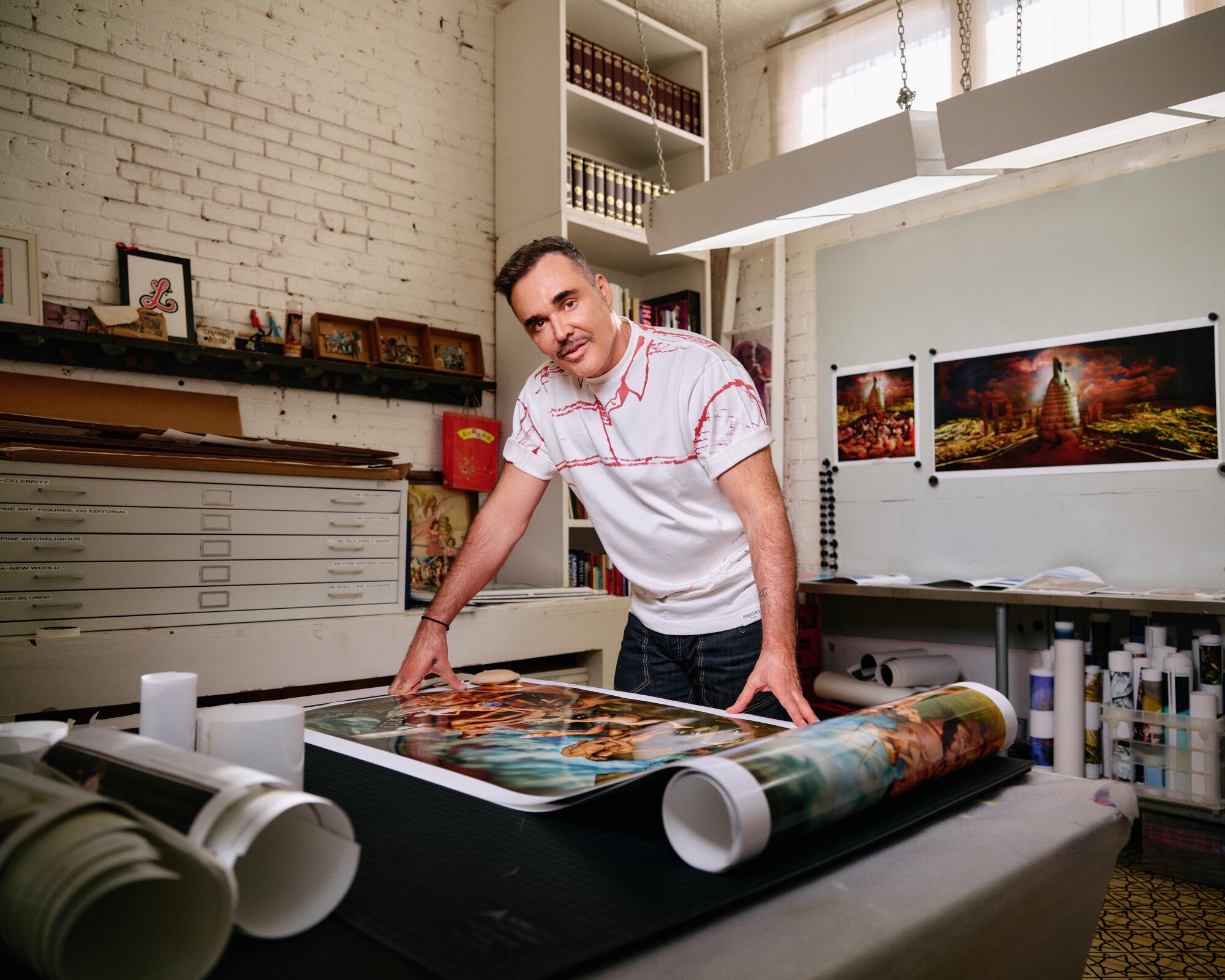
More to Read
Sign up for our Book Club newsletter
Get the latest news, events and more from the Los Angeles Times Book Club, and help us get L.A. reading and talking.
You may occasionally receive promotional content from the Los Angeles Times.

